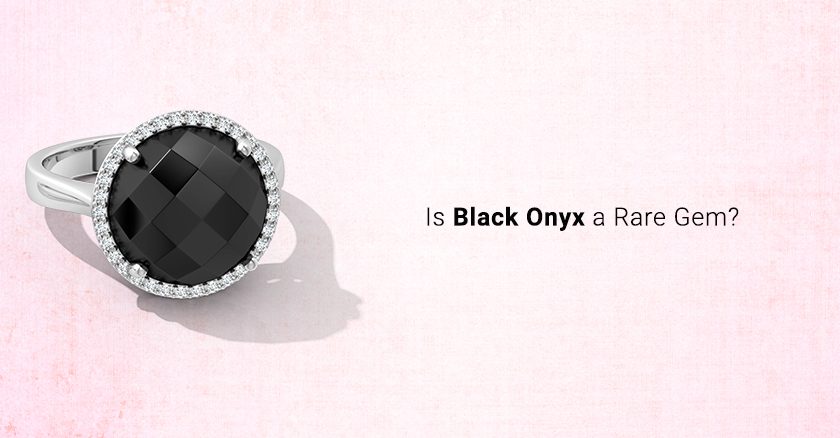An embodiment of courage and emotional well-being, the black onyx is a bold stone that is bound to make a statement. And while it may be a well-loved jewel, its rarity is often argued about.
In this post, we will divulge the background of the black onyx and discuss its rarity in-depth.
What is Black Onyx?
It is a variety of layered chalcedony that belongs to the quartz family. As indicated by the name, this semi-precious gemstone is characterized by its dramatic black body color. This jewel may also showcase white, brown, or grey parallel bands in between two layers.
While the black onyx may have several interesting aspects, nothing beats the story behind the stone’s origin and name.
According to legends, this gem is said to have been created by Venus – the goddess of love. As the folklore goes, one day Cupid cut off the fingernails of Venus when she was asleep. He scattered the nails in the sand before disappearing from the scene. To ensure that her nails didn’t perish, the gods converted them into gemstones. It was named ‘onyx’ which, at the time, was used to describe every hue of chalcedony ranging from black to dark brown to fingernail white. Later, however, the Romans eventually restricted the word’s usage to only the dark brown and black varieties of this gem.
While this story about the gem’s formation continues to remain just folklore, it still infuses an element of intrigue, which makes the black onyx even more fascinating.
The main question, is it rare?
The answer is both yes and no.
As of today, the most desired variety of black onyx showcases a singular rich black hue with no banding. This type of onyx, unfortunately, is exceptionally rare and is therefore not easily found in the market.
Most of the commercially sold black onyx stones today are actually grey chalcedonies that have been treated to achieve the desired black hue. And unlike natural black onyx, these variations are available in large quantities.
What are the treatments used?
Grey chalcedonies typically undergo two major treatments, they are as follows…
1) Dyeing
You’d be surprised to know that this treatment has been used since ancient times.
During this process, the gem is soaked in a sugar solution that infiltrates its body through the tiny cracks and fractures present on the jewel’s surface.
Once done, the gemstone is treated with either sulfuric or hydrochloric acid to carbonize the sugar present on the top layers of the jewel.
This treatment is both stable and permanent. This means that the process does not greatly affect the jewel’s durability or chemical structure and the color is unlikely to change when the stone is handled with care.
2) Heat Treatment
In many cases, the gem is also heat-treated to enhance its hue and remove any undesirable colors from its body.
During this process, the stone is exposed to varying temperatures of heat at regular intervals until it adopts the desired shade.
Just like the dyeing treatment, this process too is stable and the results of the same are long-lasting.
Final Thought
Now that you’re more aware of the various aspects of this gem, we’re sure you’ll be able to make an informed purchase.
Also read: Is Citrine a Rare Gem?




























